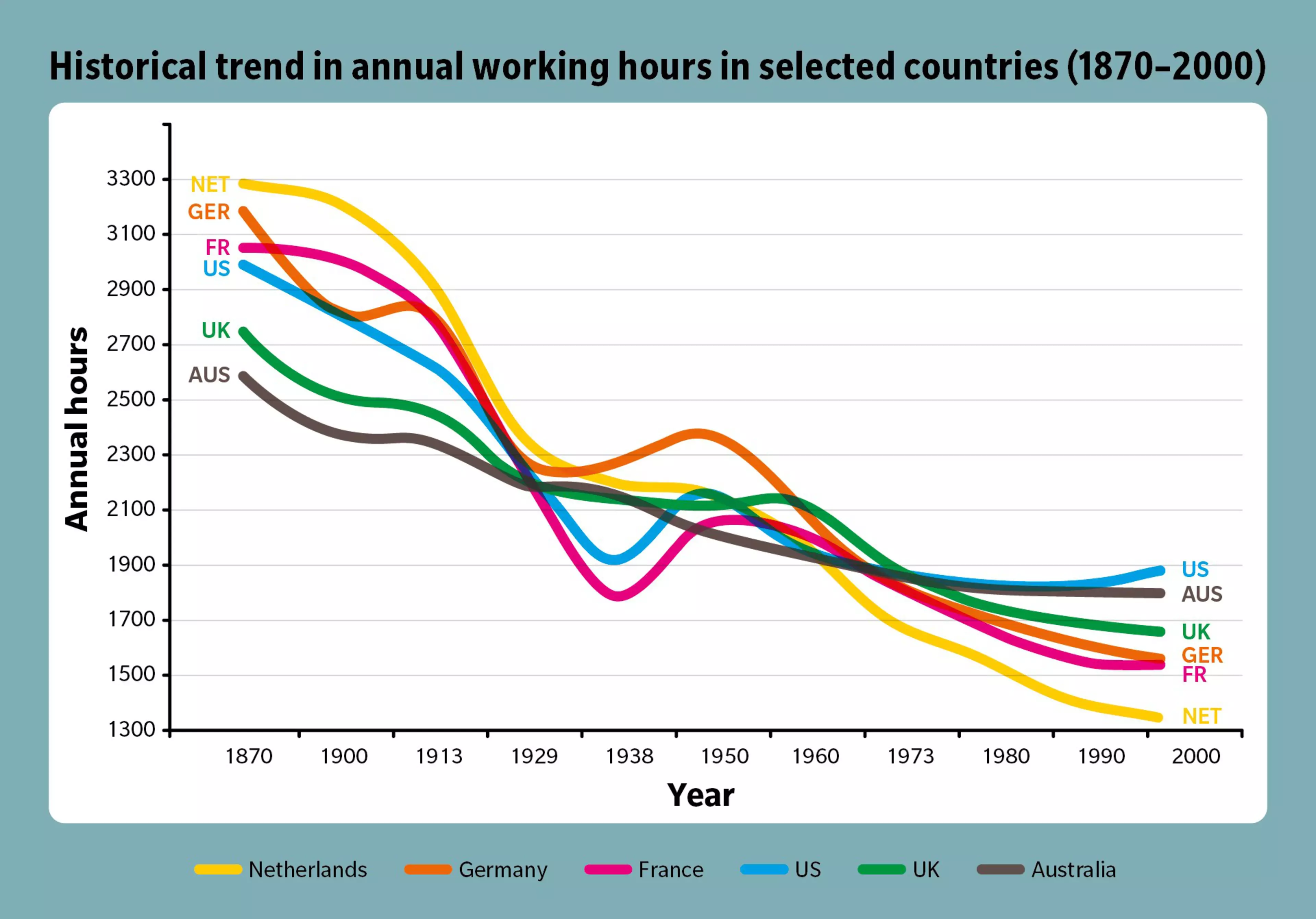Working only four days instead of five, but with the same pay. It may sound like a beautiful dream for many employees, but it could soon become a reality thanks to the ever-increasing digitalization and the constant evolution of artificial intelligence. Technology tools and automation could enable workers to manage their workload and to carry out their tasks more quickly and efficiently. Time-consuming repetitive or mindless routine tasks could be automated thanks to AI, freeing up employees and saving them time. Despite reduced working hours, employees are still just as productive as before and achieve the same work performance, which is why the standard four-day week is becoming closer than ever.
There was a time when productivity and the hard work of employees were measured in hours. For many workers (in traditionally office-based roles), calculating working hours is no longer as simple as clocking in and out. The internet, mobile devices and the introduction of hybrid, home, and elective workplaces have changed the workplace, allowing people to perform their duties wherever and whenever they need or want to.
One of the downsides of these new freedoms is the potential loss of a balanced work and home life, or the blurring of the lines between the two. To address this, one initiative that has gained momentum in recent years is the introduction of the four-day week - the idea being to encourage people to work smarter, not harder.
Advocates of this approach argue that the principle of a reduced four-day week improves work/life balance, reduces stress, and boosts efficiency, while critics worry about business continuity and potential productivity challenges. The success of a four-day week regime, therefore, relies on productivity levels being maintained or preferably increased – a benefit which can also help to address labor shortages, while workers also gain a better balance between their work and life.
Many companies and governments have tested the concept, with trials showing positive results in employee well-being and retention.




